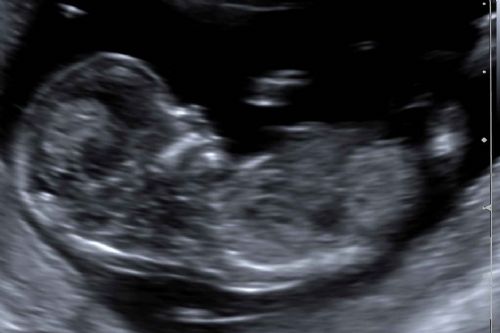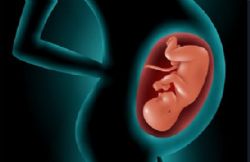The Supreme Court will soon reconsider the decision in Roe v. Wade (1973), which made abortion legal in America through all nine months of pregnancy. At that “point in the development of man’s knowledge,” as Justice Harry Blackmun put it in Roe, there was simply no consensus about when life begins. In other words, the fetus could not be said with any certainty to be alive and therefore wasn’t worthy of legal protection.
As a diagnostic radiologist—whose youngest patients are fetuses, who are very much alive—I submitted a friend-of-the-court brief in Dobbs v. Jackson Women’s Health Organization urging the justices to rethink Roe, a case premised on a claim about science. I was joined by two other female physicians, a neonatologist and an obstetrician, who also value their youngest patients, believing that whether inside their mothers or born, premature or full-term, they are worthy of respect and protection.
Ultrasound technology was in its infancy in the 1970s, when there was much more uncertainty about life before birth. The first ultrasound machines, introduced in 1958, were enormous, and the images were rudimentary. It was only in the later 1970s that fetal ultrasound became widely available, with increasingly detailed images of recognizably human babies. Black-and-white ultrasound images are now found on refrigerators of expectant parents across America. New three-dimensional images have put a human face on the person once dehumanized as a mere clump of cells.
Perfectly apparent now, to the justices sitting on today’s court as well as the public, are the liveliness and humanity of babies at 15 weeks of gestation—the age at which Mississippi proposes to protect them from elective termination.
Nestled within their mothers, these fetuses on average are 6.4 inches long and weigh 4.1 ounces. They have the proportions of a newborn—seemingly all head and rounded belly. The major organs are formed and functioning, and although the child receives nutrients and oxygen through the mother’s umbilical cord, the fetal digestive, urinary and respiratory systems are practicing for life outside the womb. The sex of the child is easy to discern by this point. The baby swallows and even breathes, filling the lungs with amniotic fluid and expelling it. The heart is fully formed, its four chambers working hard, with the delicate valves opening and closing.
A healthy baby at 15 weeks is an active baby. Unless the child is asleep, kicking and arm-waving are commonly seen during ultrasound evaluations. The fetal spine is a marvel of intricacy, and it is most often gently curved as the fetus rests against the mother’s uterine wall. Often, I watch as babies plant their feet against the uterine wall and stretch vigorously. Sometimes a delicate hand—with all five fingers—approaches the face and appears to scratch an itch. Fingernails aren’t visible, but they are present. We can see how the bones of the leg meet the tiny ankles and the many-boned feet.
At 15 weeks, the brain’s frontal lobes, ventricles, and thalamus fill the oval-shaped skull. The baby’s profile is endearing in its petite perfection: gently sloping nose, distinct upper and lower lips, eyes that open and close. With the advent of 3D ultrasound, we can now see the fetal face in all its detail.
These are the patients I encounter daily in my work as a radiologist. Clearly human, clearly alive, no longer mysteriously hidden from the eyes and knowledge of man, they ask us to consider them not disposable nonhumans but valuable members of our human family.
Yes, our understanding was different in 1973. But in Roe’s own terms, we have arrived at a much different “point in the development of man’s knowledge” about life in utero. The Supreme Court’s judgement should reflect that advancement and put an end to the casual cruelty of unfettered abortion.
Dr. Christie is a diagnostic radiologist and a policy adviser for the Catholic Association.
This opinion appeared in the October 29, 2021, print edition of the Wall Street Journal.
Copyright ©2021 Dow Jones & Company, Inc. All Rights Reserved.




